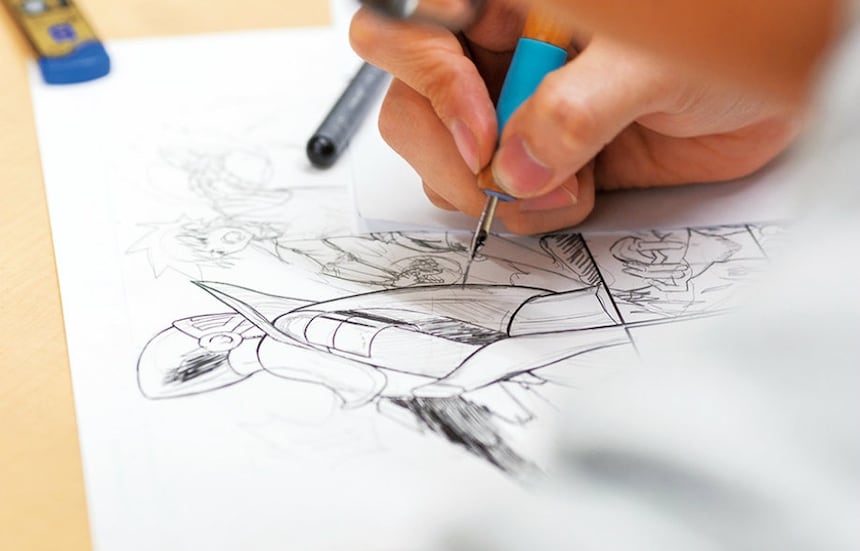How to Use Manga Pens
Ever wanted the inside scoop on manga techniques from actual manga professionals? This fascinating set of videos from the Samurai Manga Workshop features lessons in manga basics from a professional manga artist.
1. Essential Tools for Manga
https://www.youtube.com/watch?v=H7kGxRqw0qc
Ever wondered what kind of ink is best? In this video, artist and assistant illustrator Yukari Amano goes through the list of essential tools for manga, offering a great array of choices. She introduces both the most common type of ink for manga and her own personal choice, as well as recommending water-resistant ink for color comics.
Amano also illustrates the differences between three key types of dip pens, and if you've ever agonize over how thick to make panel borders, she reveals that many manga artists simply use a 0.8 mm graphic pen. She further recommends a fude-pen, or brush pen, which has the benefit of ink inside, for coloring hair.
2. Pen Skills
https://www.youtube.com/watch?v=MXee9PA1BZ4
Amano illustrates how to use the same pen to generate lines of completely different consistencies, using the front to draw thick lines of varying width, the side of the pen to draw stable lines since it's less affected by pressure (the subtitle has this backward), and the back of the pen to draw extremely thin lines, though you may have trouble getting the ink to flow for very long.
We also get some great tips on developing pen technique, starting with identifying your strongest drawing direction. Simply draw an asterisk: the cleanest lie will let you know the direction in which you should try to work for the best results, and you should turn your paper accordingly when inking. Amano recommends practicing repeated sequences of arcs and loops to improve your line work.
Applying ink to a penciled piece, Amano demonstrates how curved lines for hair should be drawn quickly and smoothly, again turning the page to draw at your best angle. There should be lots of paper rotation as you go!
3. Solid Black & Hair Shine
https://www.youtube.com/watch?v=GYWGFUFncpU
Inking solid black in manga is called beta, which indicates a solid area of color, while black broken by white shine in hair is called tsuya-beta, or shiny beta.
For solid black, start by outlining the sections to be shaded with a graphic pen. After that, using a felt-type brush pen, first thicken the exterior line as you would expect, then simply trace straight lines up and down to fill each section. Use the wide edge of the brush for big open areas, and smaller pens for the finer parts and corners.
For hair, Amano recommends covering parts of the image you don't want to color with masking tape, which can be seen with a red, scale-like pattern in the video. Beginners might also want to start by penciling in the basic arcs of shine with a blue mechanical pencil for guidance.
After that, it's just patience and a steady hand with a brush-tipped pen, relying on the masking tape to save you from line overruns. You can see Amano periodically peel off the masking tape as she goes, and she recommends more tsuya, or shine, for female characters, and less for male characters.
Still excited to learn more about manga techniques? Check out a few more tutorials at the Samurai Manga Workshop here.




